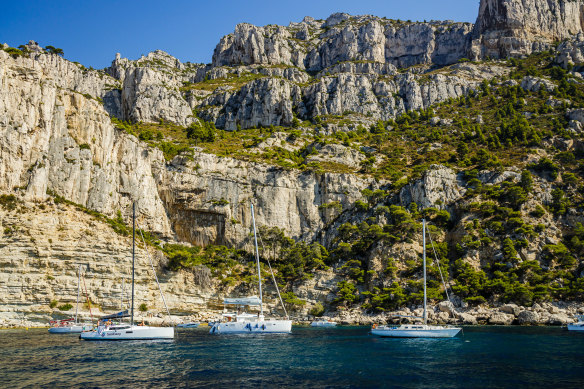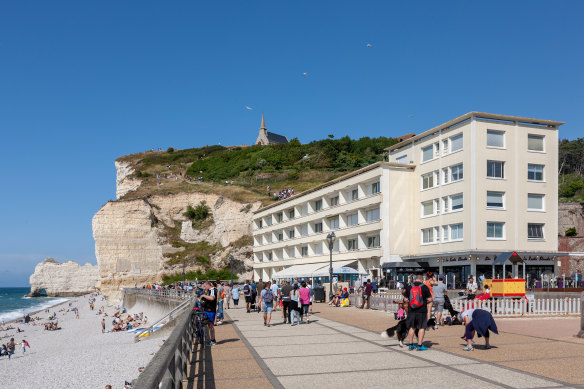
It also suggested “de-marketing” campaigns with images of overcrowded sites to make them seem less appealing.
Already tested by Marseille in 2021 and Corsica’s Porto-Vecchio in 2022, the strategy was adopted last month by tourism officials at Mont-Saint-Michel in Normandy, which posted images of sightseers stuck in huge queues after 60,000 people flocked to the 10th-century abbey and village over the Ascension Day holiday weekend.

Authorities have cut tourist numbers for the Sugiton coves from 2500 a day to 400.Credit: istock
Thomas Velter, head of the local tourist authority, told France Info: “It wouldn’t be desirable to put turnstiles at the foot of Mont-Saint-Michel but we will very soon have to regulate the flow.”
Some sites are resorting to visitor quotas. The latest to do so is the island of Bréhat in Brittany which has a population of 377 but has seen up to 15 times that number on its shores in a single day.
This month, Mayor Olivier Carre issued a decree limiting the number of day trippers to 4700 between July 14 and August 25.
The Calanques National Park, near Marseille, recently announced it would maintain a booking system for visiting the Sugiton coves, cutting tourist numbers from 2500 per day to just 400.

Étretat beach. A new campaign is underway to encourage visitors to other areas of France.Credit: istock
The national park on the Porquerolles island, off the Riviera, has limited daily visitors to 6000 over the past three summers to protect the landscape.
After a lull during the COVID crisis, tourists have returned to France en masse with the Paris tourism office projecting upward of 37 million visitors to the capital alone this year, nearly matching pre-pandemic levels. British visitors were second only to Americans.
“Over-tourism is the worst enemy of tourism,” said Jean-François Rial, head of the Paris Tourist Office. “There are so many beautiful places where there is no one.”
The Telegraph, London
Get a note directly from our foreign correspondents on what’s making headlines around the world. Sign up for the weekly What in the World newsletter here.



























